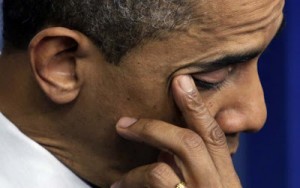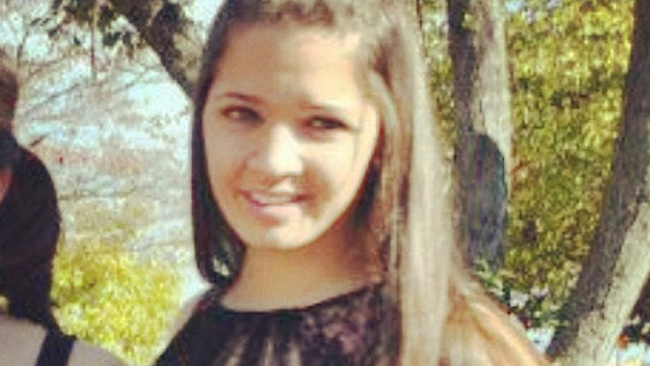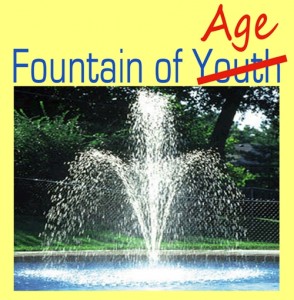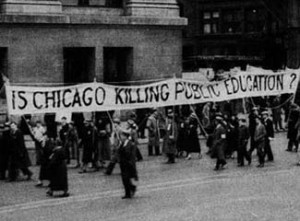 What other reaction are we supposed to experience when learning of the atrocity committed in Connecticut on Friday? When an event occurs such as the one that took the lives of 27 people at an elementary school just after morning class had started, and when a situation exists that practically mandates for these massacres to happen, why are we surprised? The only variable that can cause shock for mass slaughter these days is the age of the victims; in this case, 20 of those people who were killed weren’t old enough to know anything about evil, or about the world they lived in and what it was capable of doing to them. But we, who are left behind to lay to rest forever the fragile flesh that used to smile and cry and feel so much love, can only stand and take the unbearable grief and store up our tears and messages of sorrow until the next group of people die.
What other reaction are we supposed to experience when learning of the atrocity committed in Connecticut on Friday? When an event occurs such as the one that took the lives of 27 people at an elementary school just after morning class had started, and when a situation exists that practically mandates for these massacres to happen, why are we surprised? The only variable that can cause shock for mass slaughter these days is the age of the victims; in this case, 20 of those people who were killed weren’t old enough to know anything about evil, or about the world they lived in and what it was capable of doing to them. But we, who are left behind to lay to rest forever the fragile flesh that used to smile and cry and feel so much love, can only stand and take the unbearable grief and store up our tears and messages of sorrow until the next group of people die.
For the last ten years, the regulation of firearms in the United States has become an increasingly controversial issue. Michael Moore’s Bowling for Columbine opened a disturbingly ugly can of worms, that of breaking the taboo on America’s violence culture. Because Moore’s film was not a polemic about guns, they weren’t even its main focus. What Moore unmasked was America’s deep-seated fear. Violence, drug abuse, rape and suicide are only the consequences of that fear, outlets for which the intense anxieties and emotional overloads that pepetrators and victims alike feel. Or, don’t feel, as is frequently the case now. Most of us who watch Bowling for Columbine sit stony-faced in grim sadness at the tragedies documented, but when Charlton Heston thunders his violent challenge against any kind of gun regulation, and receives a standing and rapturous ovation for it, that’s when our blood boils. It boils because we can’t understand how the majority of people can support both sides of the argument.
America is united in its outpouring of grief and with sending messages of support to the victims, survivors and their friends and families (and, a lot of the time, classmates). From the ACLU to the NRA everyone can agree that killing innocent people, especially children, is a bad thing. Yet in two week’s time, when some other sickening news story has stolen our attention, the two camps will be back on each side of the line. Gun owners and local ‘militias’ across the country will hold ‘rallies’ and gun shows to demonstrate just how safe guns really are (when they’re not loaded and in the hands of a human being). Hand in hand with these militaristic displays is the verbal defence, the Second Amendment to the US Constitution, the one sentence in any constitution anywhere that has signalled the early deaths of more people than anything other provision in history. This sentence is used to justify the cult of death that surrounds gun ownership, a cult that promotes violence and slaughter as the easiest and most effective solution to a problem, and as a symbol of strength in a society that does not recognise the strength of knowledge, creativity and debate, strengths that ironically were very much recognised by the authors of the Amendment.
Let’s see what it actually says: “A well regulated Militia, being necessary to the security of a free State, the right of the people to keep and bear Arms, shall not be infringed.” That ‘Militia’ now numbers 65million people – more than the entire population of my own country – with over 310million non-military firearms, meaning those 65million people have an average of 5 guns each. The security of that ‘free state’ costs the lives of 32 people a day, with another 240 wounded just to make sure nobody threatens that security. The fact that this ‘right’ was written down over 220 years ago has made no difference to any court in America, all of whom seem to think that the ‘threat’ from as nefarious a people as the Indians, the French, the British and the Spanish against American lands and peoples is still at large, although there’s been a change of heart over things like slavery and the right to vote. Again, as Moore’s film shows, a then-justifiable paranoia on a vast and largely unexplored landmass (full of people who don’t want you there), has been warped to insane proportions in modern times.
Returning to his home state of Michigan, Moore tells the story of Kayla Rolland, who was seven years old when she was shot dead by her classmate, and who had the massively upsetting ‘record’ of being the youngest person to die in a school shooting – that is, until Friday morning. But what’s even more incredible is that the boy who shot her, Dedric Owens, was only 6 years old then, and is 18 years old now, the same age as Eric Harris. In America, children and young people are as close to death as the elderly and terminally ill, except those people already know how and why they’ll die.
American children have learned to fear like their parents. But notice that this fear has no object, no clear reason for its existence. Nations fear invasion and subterfuge by other nations, classes fear usurpation and exploitation by other classes, demographics fear prejudice and hatred from other demographics, communities fear subversion and infiltration from other communities. But America adds the fear of the individual to all of this, which is already in much higher proportions that most other countries anyway. To be an American is to be afraid, afraid because of your skin colour, afraid because of your gender, afraid because of your sexual orientation, afraid because of your neighbourhood, afraid because of your employment prospects, afraid because of the historical legacy of the community you live in, afraid because of your appearance, afraid because of your financial situation, afraid always.
We outside of America, with our weird food, our ‘socialism’, our incomprehensible languages, arenotafraid like you are. We can worry about our economy, we can despair about the treatment of minorities, we can quiver with fury at social and political injustices, but when we go to bed at night, we don’t fear them. We think that tomorrow is another chance to work it out. We’ll come up with a new idea and try it, see if it improves on the last time. We see America going to bed shaking with anxiety and rage and sadness, waking up the next morning with a mind full of white noise and a coat full of guns. We don’t understand why you are afraid to that level, with an intensity that even our oldest generation felt only some times.
We look at America with a mixture of grudging tolerance and painful heartbreak. Tolerance because, despite the crimes your government, your military and your economic system commits on a global scale every day, we know that deep down Americans are as hard-working, passionate and good-natured as the rest of us. Heartbreak because we see your beautiful country, with its vast and lush landscape and all the colours, sounds, smiles and achievements of your great people, being ravaged by the most violent and evil impulses human beings are capable of.
With a society that lives fear from sunrise to sunset, the deepest fears of all are realised on days like Friday: the fear of losing your loved ones. Suddenly all the anxieties about the economy and race relations and political stagnation evaporate into the meaningless exaggerations they are, and reality pierces through this media-induced mist of propaganda. For once, the gun stays at home, because you need both hands to cradle the blood-soaked body of your child. This website sells bullets in boxes of 20 for £13.49. It cost less than a dollar to destory your entire life.

Dirt to Dirt,




